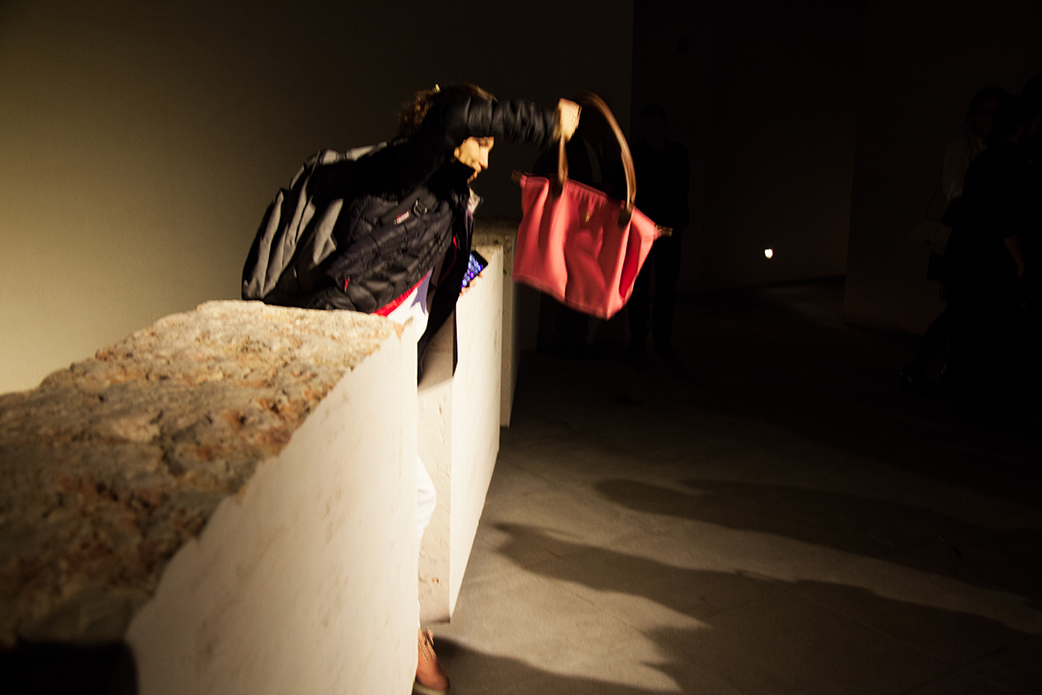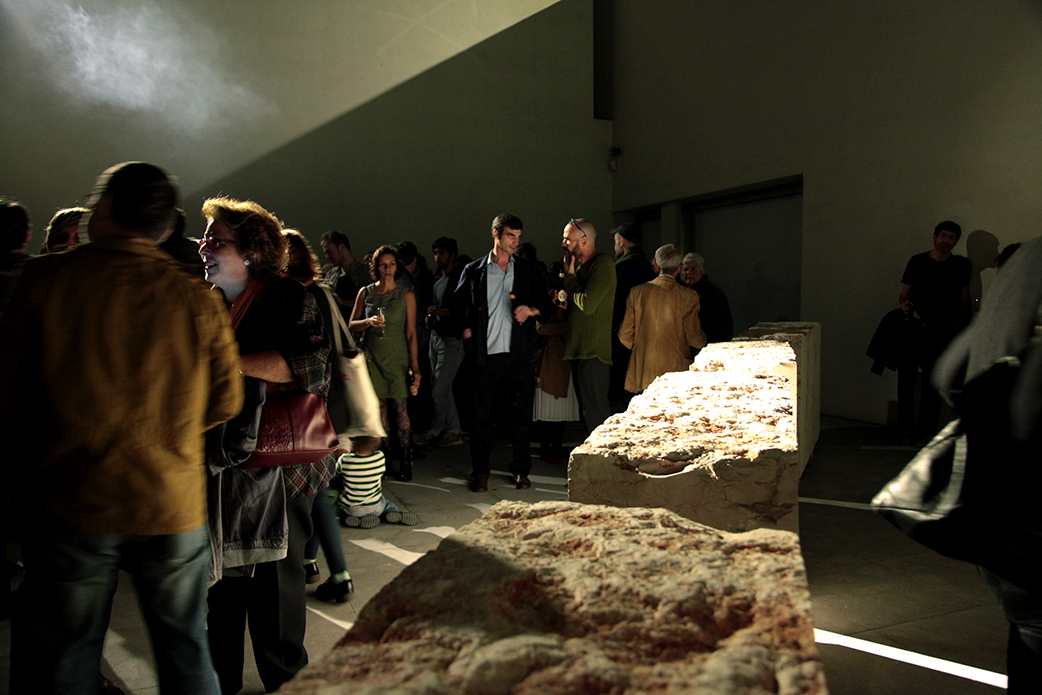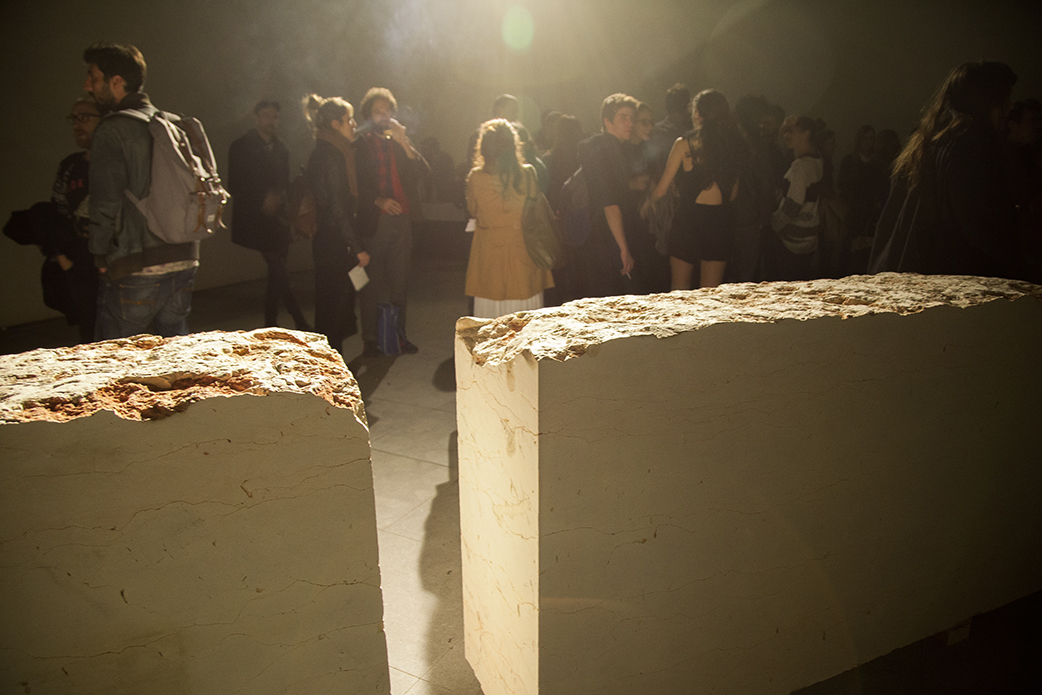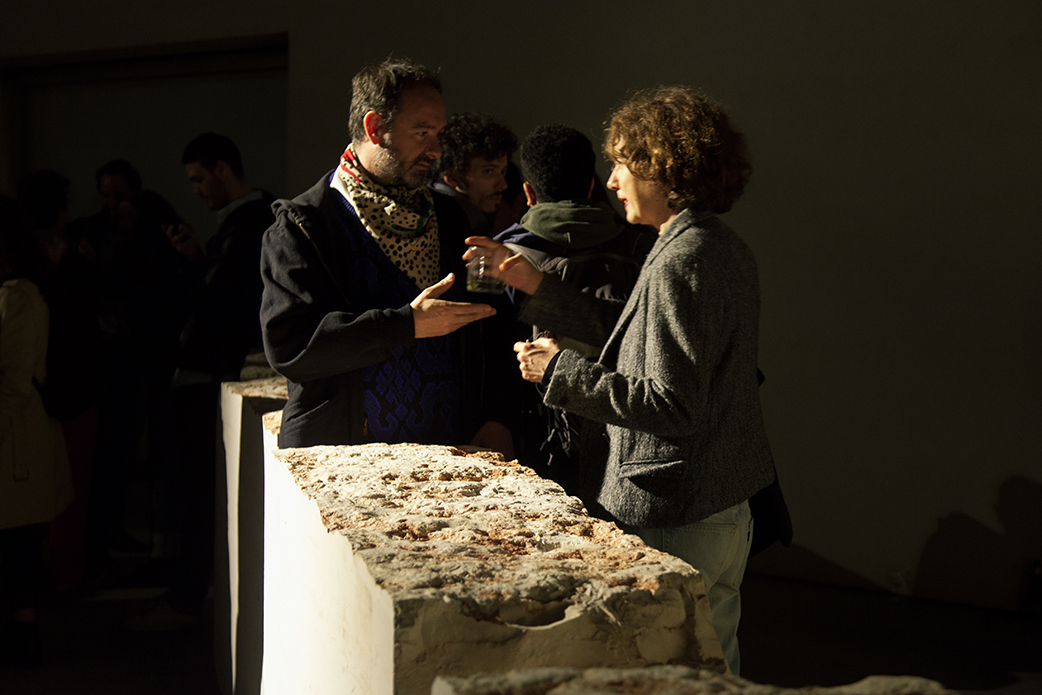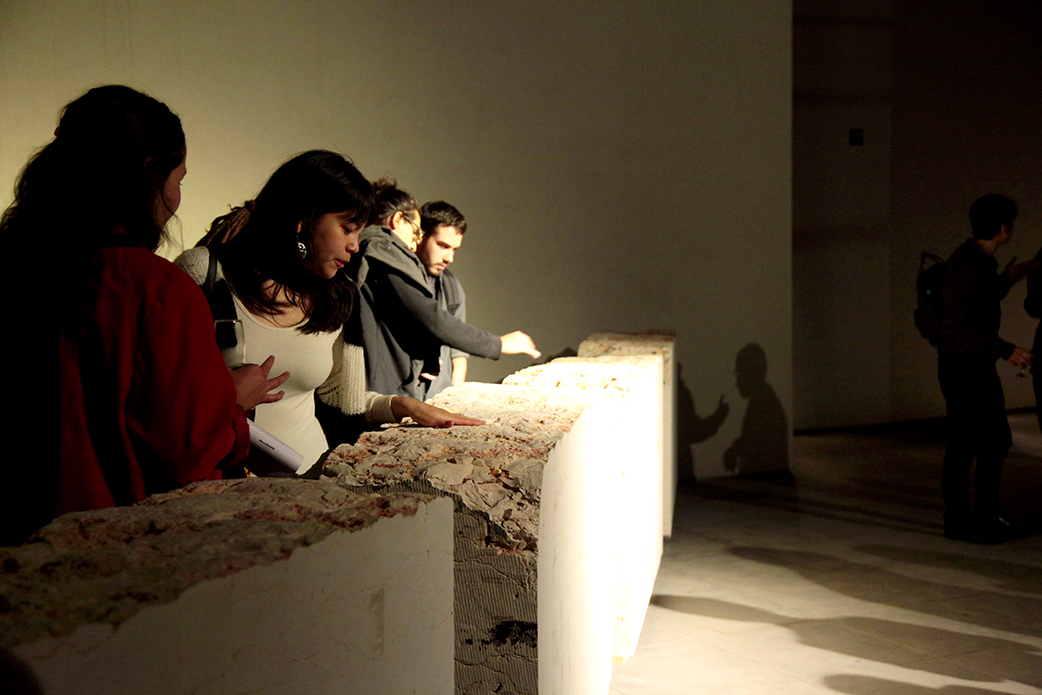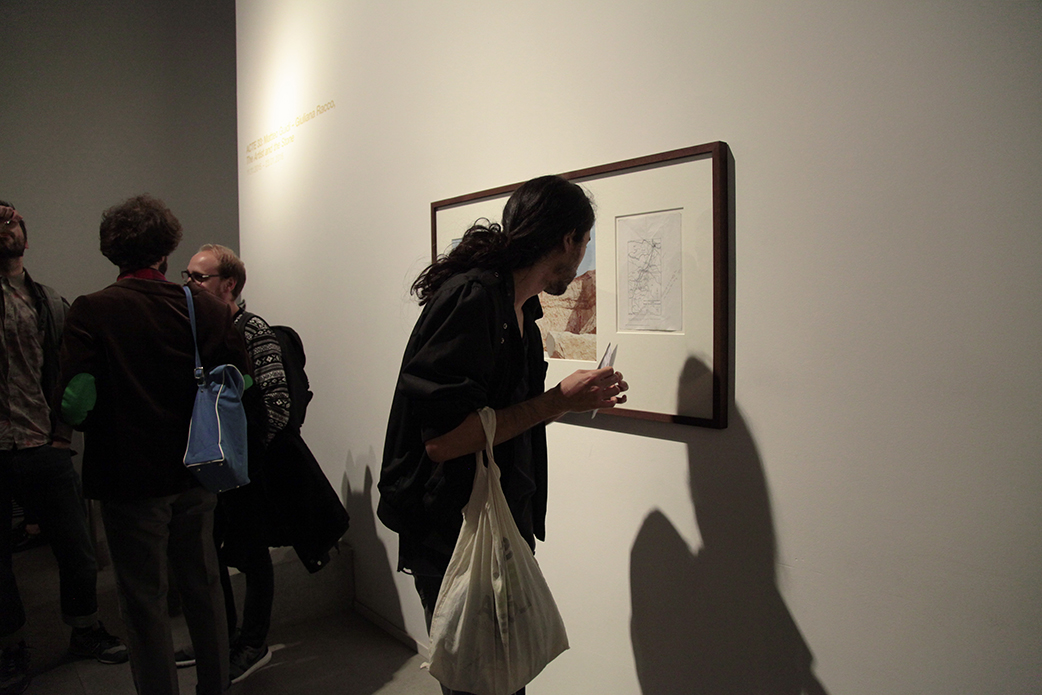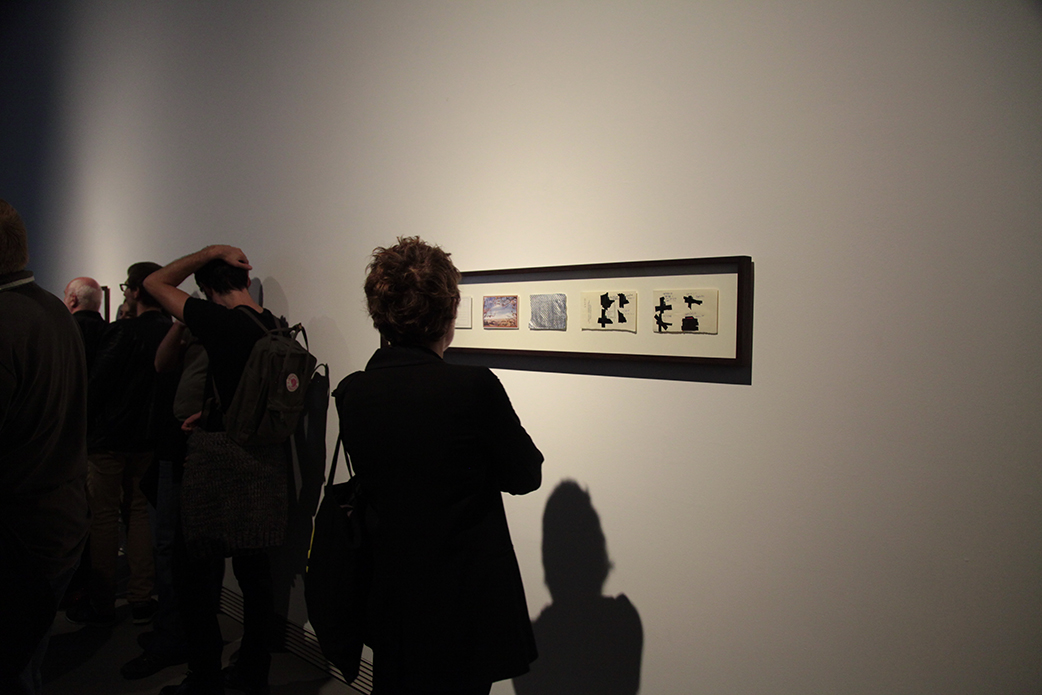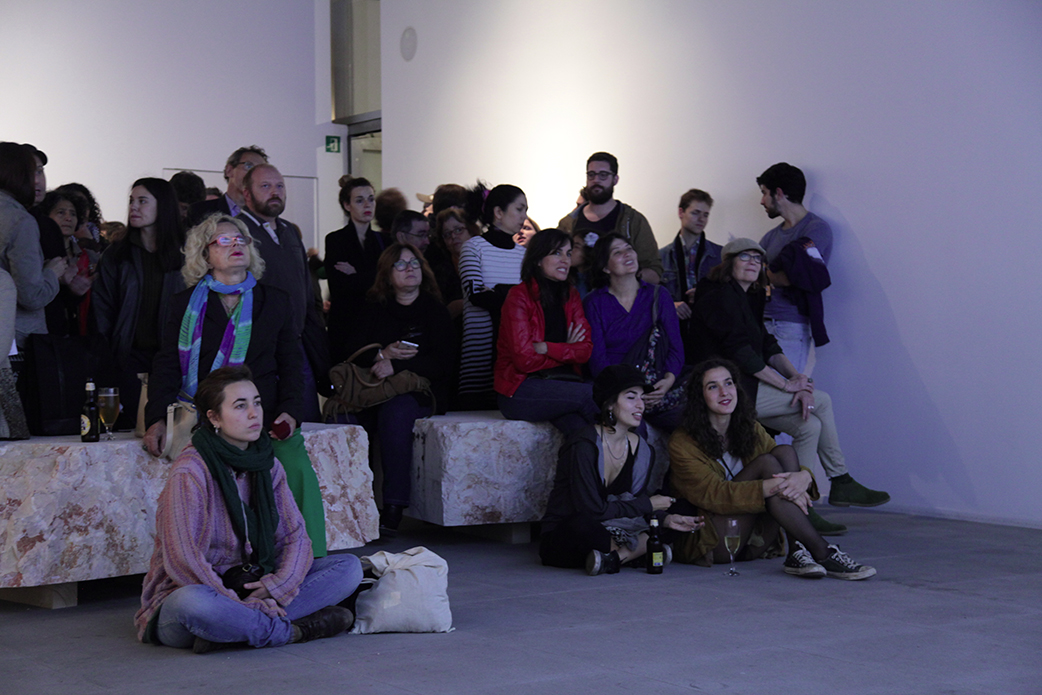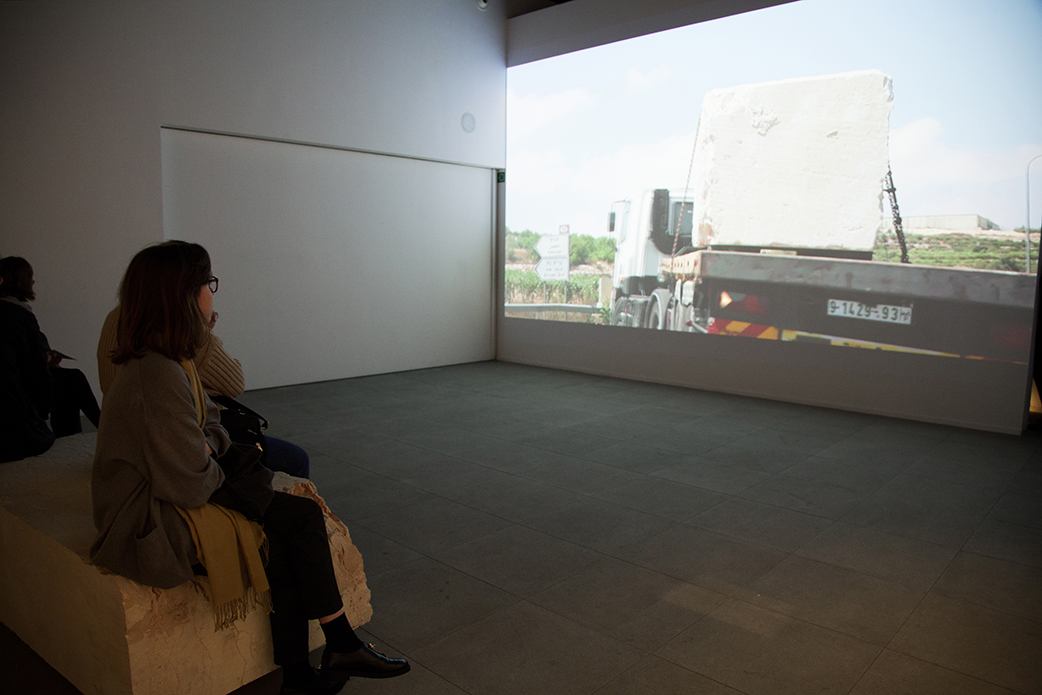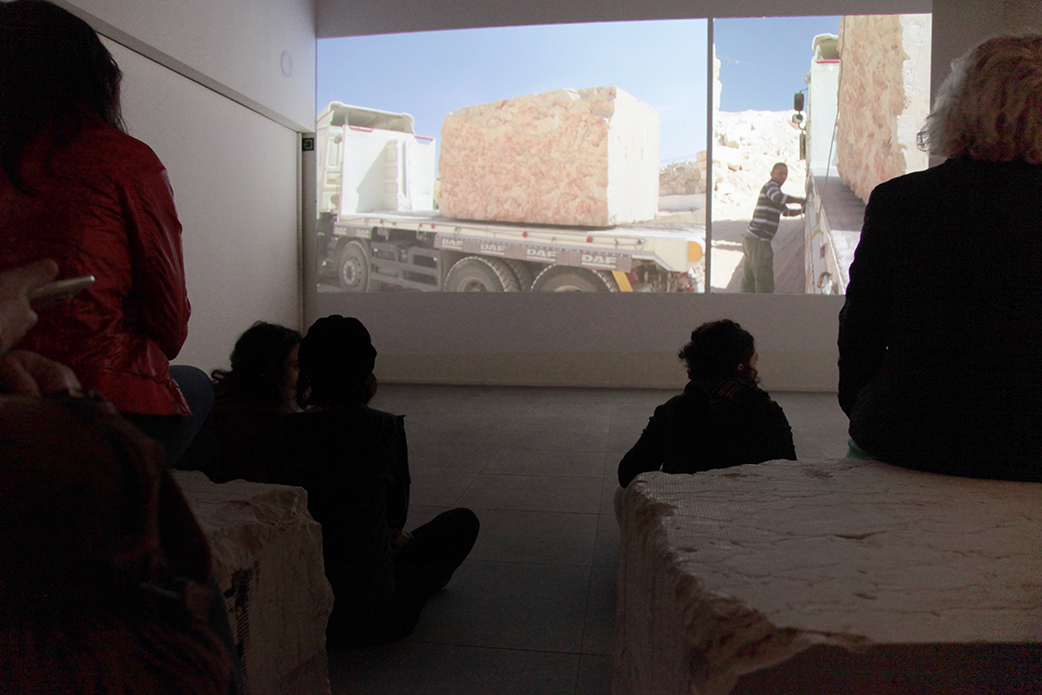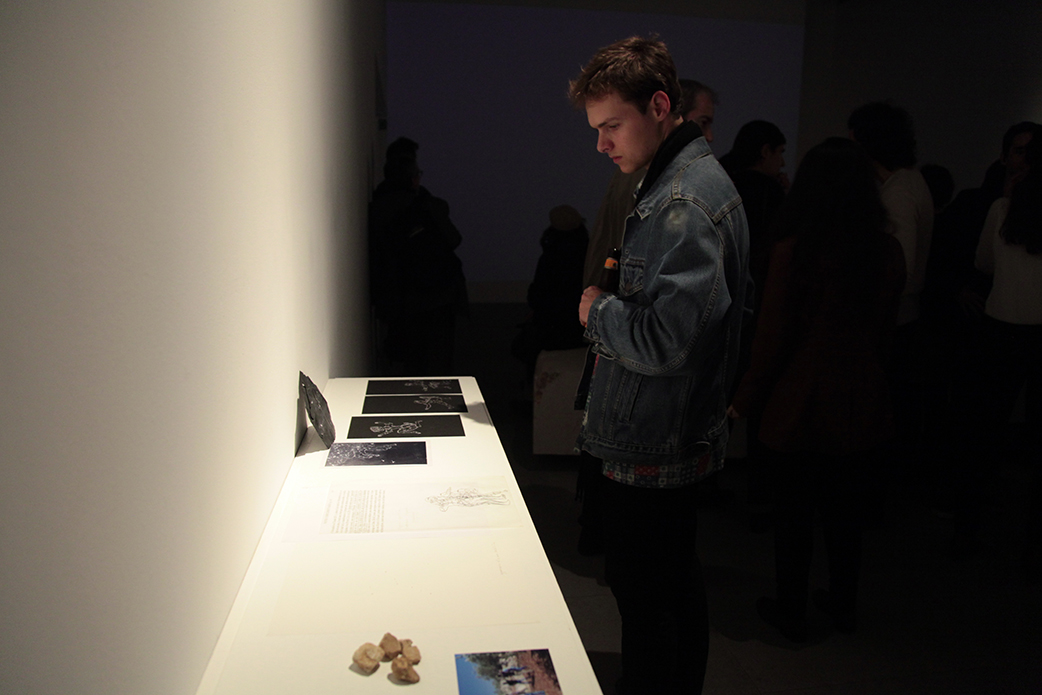On the evening of Tuesday November 10, 2015 the Nivell Zero of the Fundació Suñol opened its doors to almost 300 visitors of the inauguration of Acte 33: The Artist and the Stone.
Under the curatorship of Herman Bashiron Mendolicchio, Giuliana Racco and Matteo Guidi have proposed an exhibition, running until January 23rd, 2016, composed of a series of new pieces produced for this moment in the ongoing process. Choosing to focus on the movement of the Stone and, inversely, the stasis of the Artist, the works on view visit the core themes of context, movement, negotiation, desire and constraint.
Starting from a photo-documentation of In Between Camps (2012) –the origins of the process– a two-day walk across a stretch of land in Palestine (2012), following the ground embedded stone traces of an ancient Roman aqueduct, through to the framed objects and documents serving as tactics for the ‘negotiation of the movement’ of certain elements –audio-visual digital information and the stone itself– which otherwise would/could have remained blocked for legal or security reasons.
Some visitors resting on two 2-tonne stone ‘benches’ watching the 30-minute video Leish La’a? (Why Not?), which traces the movement of the 22-tonne block from its carving out of the quarry near Hebron, its transport through Arroub refugee camp to the factory where it was prepared for exportation, across checkpoints to Ashdod Port and finally Barcelona.
Interspersed with moments of everyday life across the south West Bank, the video includes scenes presenting the ubiquitousness of stones in the landscape and ludic activities, playing on the absurdity of the initial proposal of attempting to contemporaneously move a subject and a massive object from the same territory, with the notable absence of the subject.
However, the Artist does appear, if only virtually, in the remotest space of the exhibition, where a video presents Ibrahim Jawabreh, continuously running away and towards the camera only to finish, time and time again, against the lens and therefore the screen, blocked within an eternal loop.
And finally two works –a simple table presenting an analysis of the gesture of stone-throwing as a projection into the future, an act of resistance and a ludic activity merge with an investigation on the etymology of desire (L. de siderium: from the stars), while in the courtyard, 4 of the 6 blocks stand upright, evoking a barrier across which it is nonetheless possible to negotiate one’s movements– embody aspects of a process that managed to move across strict geo-political limits, while keeping, to this day, its future open.
Photos by Marzia Matarese

